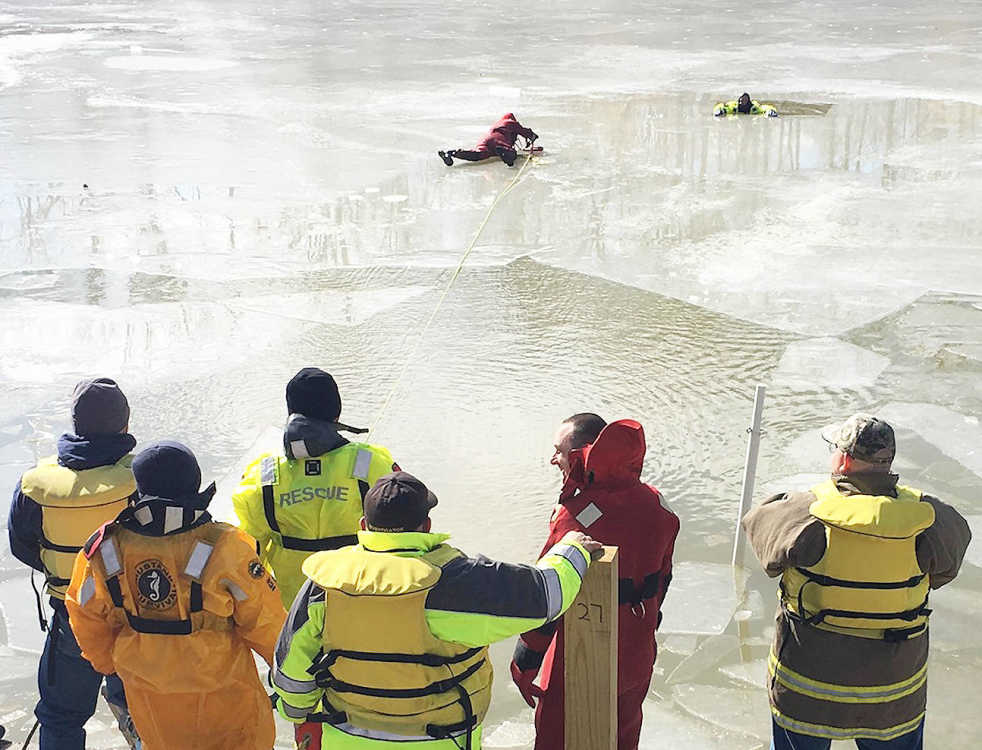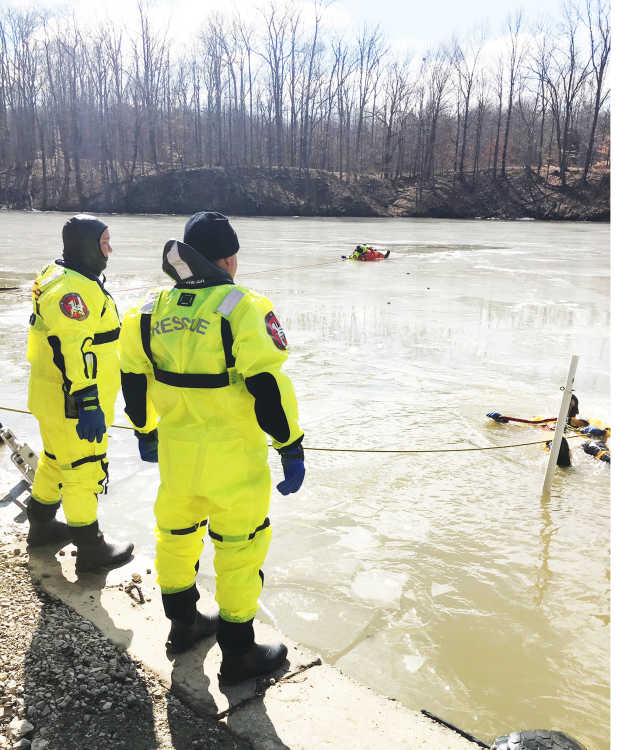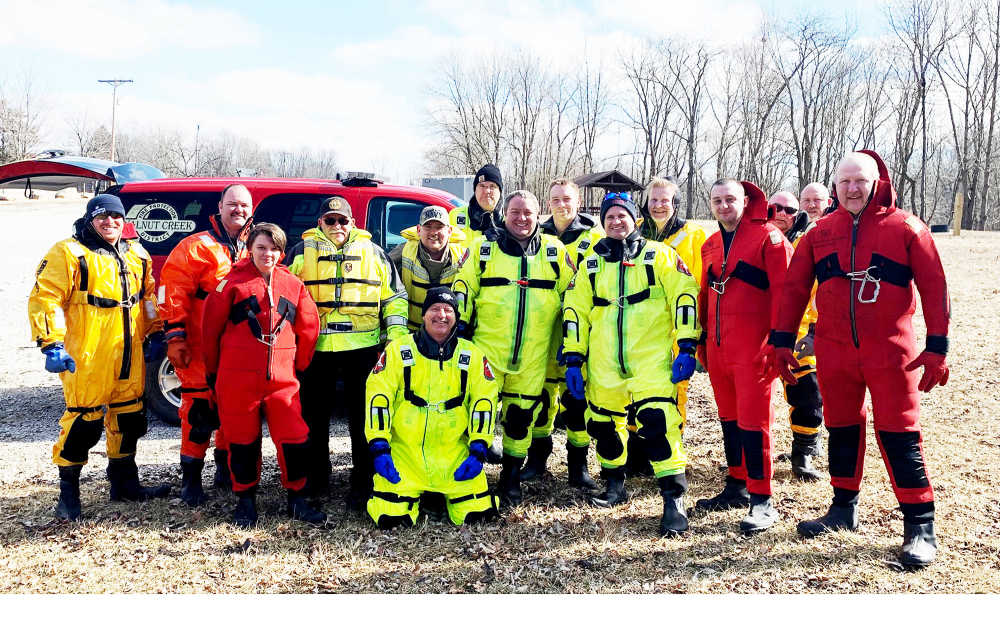Ice rescue instruction immerses students in frigid dose of reality

CLINTON FALLS -- With a number of ice-related rescues necessary in west-central Indiana this winter and a recent tragedy at Heritage Lake, 14 first responders representing six local departments recently received timely instruction in dive rescue/ice rescue procedures at Glenn Flint Lake in Clinton Township.
On Feb. 16 and 17, members from Clinton Township Volunteer Rescue & Fire Department, Bainbridge, Greencastle, Roachdale and Floyd Township fire departments joined Putnam County Operation Life ambulance personnel in participating in the Dive Rescue International Ice Rescue Specialist program hosted by the Clinton Township department.
The 16-hour program is a nationally recognized certification that helps prepare first responders from all public safety disciplines in how to respond and carry out surface ice rescues.

Not only was the timing good but the location true to life, course instructor and Clinton Township Fire Chief David Owens told the Banner Graphic.
“In Clinton Township there is a real possibility of having an ice rescue due to the number of lakes ponds and streams,” Owens said. “Many people use these bodies of water for recreation in the winter months without truly understanding the hazards the ice -- and more importantly the cold water under the ice -- presents if they would happen to break through the ice.
“With this hazard in our response area we realized there was a gap in training and equipment to perform this type of rescue in Putnam County,” Chief Owens said.

The class was planned in mid-December, he said, so no particular incident sparked the need for the class, although the instruction came just days after a Heritage Lake man drowned after his UTV went through the ice.
The cold, hard facts are immersion in cold water causes an acute onset of hypothermia which is the rapid lowering of the body’s core temperature, the fire chief explained.
“Our normal body core temperature is 98.6 degrees and hypothermia begins when your body temperature falls below 95 degrees,” Owens said. “Causes of hypothermia are decreased heat production and increased heat loss or a combination of both. The person who falls into cold water will lose body heat 25 times faster than a dry person.
“First responders should understand that time is against us once a victim is immersed in cold water and understand that a victim in cold water will very rapidly lose the ability to help themselves escape the cold water or follow instructions from rescuers,” the chief added.
Temperatures were 25 or 26 degrees the first day of training and about 30 the second day, Owens said, as icy waters and cold conditions provided a major dose of realism for the students.
For safety sake each of the students was tethered with the exception of those on the shore charged with pulling the would-be victims back onto dry land via a rescue sling.
The other side of the training is helping educate the public on the hazards of going on the ice.
“In Indiana we very rarely have good, solid, safe ice due to the fluctuation in temperatures,” the Clinton Township chief said. “Every year we ask the public to stay off the ice unless they know the quality and thickness. Especially children, they are the biggest at-risk members of the population due to their curiosity and often go on the ice to chase a ball or to inspect an object that is normally out of their reach due to open water. Children also succumb to hypothermia faster due to a smaller body mass than an adult.”
The class introduced students to the topics of ice hazards and formation, equipment selection, medical considerations and the application of proven rescue methods and techniques.
Successful completion of this program is measured in class participation, passing a final written exam and completing surface and in-water skills. Breakfast and lunch was provided by the Clinton Township Volunteer Fire Department Auxiliary.
“It was great training,” Owens said. “Everybody thought that it was really valuable.”
